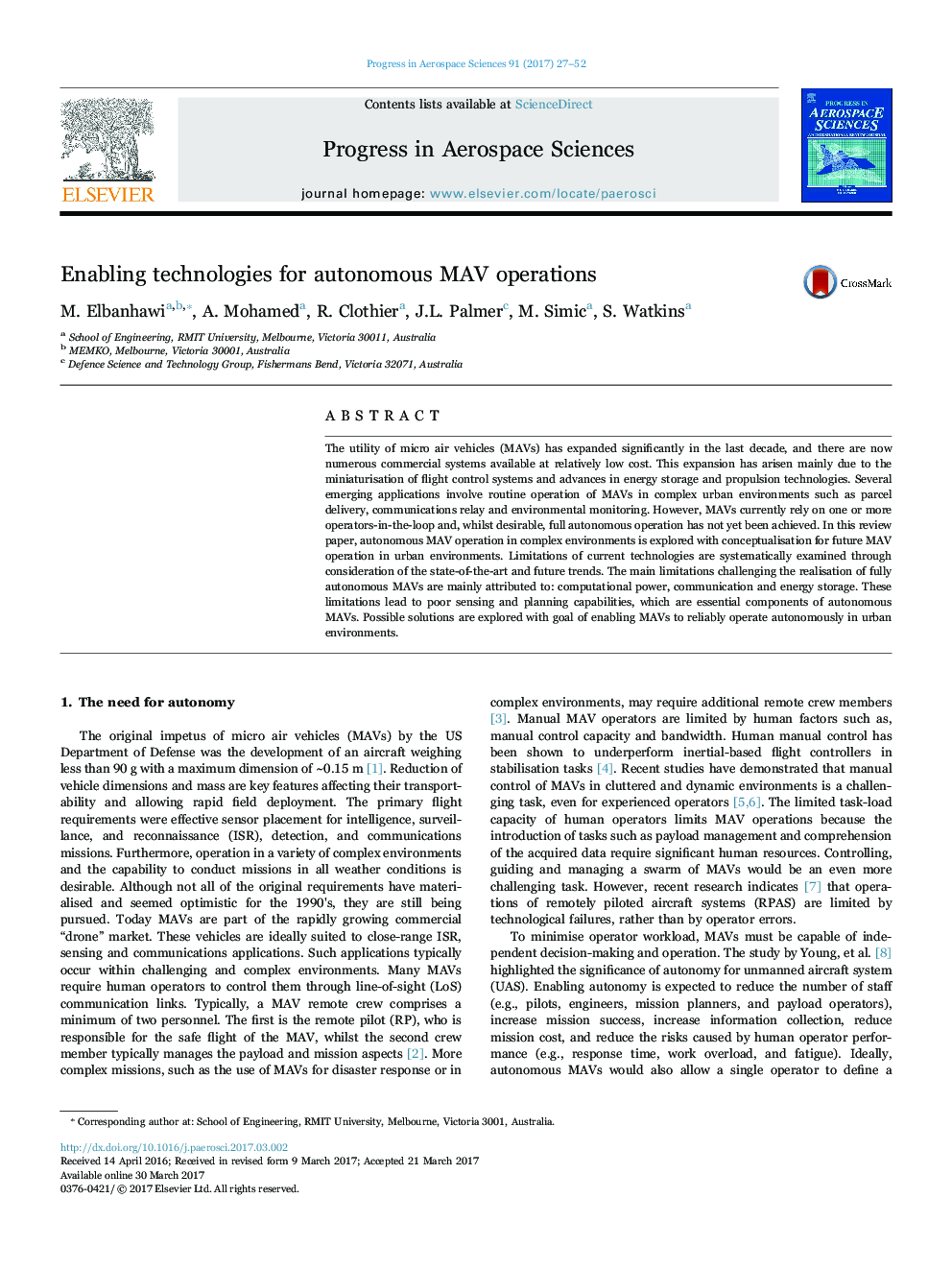| Article ID | Journal | Published Year | Pages | File Type |
|---|---|---|---|---|
| 5473078 | Progress in Aerospace Sciences | 2017 | 26 Pages |
The utility of micro air vehicles (MAVs) has expanded significantly in the last decade, and there are now numerous commercial systems available at relatively low cost. This expansion has arisen mainly due to the miniaturisation of flight control systems and advances in energy storage and propulsion technologies. Several emerging applications involve routine operation of MAVs in complex urban environments such as parcel delivery, communications relay and environmental monitoring. However, MAVs currently rely on one or more operators-in-the-loop and, whilst desirable, full autonomous operation has not yet been achieved. In this review paper, autonomous MAV operation in complex environments is explored with conceptualisation for future MAV operation in urban environments. Limitations of current technologies are systematically examined through consideration of the state-of-the-art and future trends. The main limitations challenging the realisation of fully autonomous MAVs are mainly attributed to: computational power, communication and energy storage. These limitations lead to poor sensing and planning capabilities, which are essential components of autonomous MAVs. Possible solutions are explored with goal of enabling MAVs to reliably operate autonomously in urban environments.
